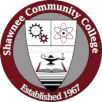 Policy
Policy
Policy Type: Board- Strategic Outcomes
Responsible: President
Related Policies: B1000, B1002, B1004, B1006
Linked Operating Standards: Axxx Continuing Education & Workforce Training Monitoring Report Development
Related Laws: 110 ILCS 805/2-4, ICCB Administrative Rules
Related External Standards: NCCET, IDFPR
HLC Criterion: 1A1A The institution’s educational programs, enrollment profile and scope of operations align with its publicly articulated mission., 1B1B The institution’s operation of the academic enterprise demonstrates its commitment to serving the public good., 2B2B
The institution presents itself accurately and completely to students and the public with respect to its educational programs and any claims it makes related to the educational experience.
, 3C3C
The institution has the faculty and staff needed for effective, high-quality programs and student services.
, 3D3D
The institution provides student support services that address the needs of its student populations, as well as the teaching resources and infrastructure necessary for student success.
, 3E3E The institution provides student support services that address the needs of its student populations, as well as the teaching resources and infrastructure necessary for student success., 3G3G The institution’s student success outcomes demonstrate continuous improvement, taking into account the student populations it serves and benchmarks that reference peer institutions., 4A4A
The institution’s administrative structures are effective and facilitate collaborative processes such as shared governance; data-informed decision making; and engagement with internal and external constituencies as appropriate.
, 4B4B
The institution’s financial and personnel resources effectively support its current operations. The institution’s financial management balances short-term needs with long-term commitments and ensures its ongoing sustainability.
, 4C4C
The institution engages in systematic strategic planning for quality improvement. It relies on data, integrating its insights from enrollment forecasts, financial capacity, student learning assessment, institutional operations and the external environment.
Monitoring Reports
Policy Statement
Continuing Education programming advances the College’s mission by providing workplace oriented learning opportunities that prepare individuals to enter, re-enter, or advance within the workforce. These programs support regional economic development by helping residents and employers build the skills needed to sustain a competitive and adaptable labor force.
Continuing Education courses and seminars may award Continuing Education Units (CEUs), certifications, digital badges, or other forms of recognized credit, and may be designed as modular or competency-based experiences that connect to the College’s credit-bearing programs. The College affirms its responsibility to sustain and improve Continuing Education offerings that support job readiness, career mobility, and lifelong learning while upholding standards of quality, equity, and fiscal accountability.
The Board recognizes that:
- Individuals receive value by engaging in the College’s continuing education courses, seminars, certifications, credentials, and programs designed to help them upgrade their skills for their current job, retrain for a new job, or prepare for a new career. By completing these activities, individuals increase their employability, mobility, and earning potential.
- Learners receive greater value when their participation in continuing education programming meets nationally recognized criteria, leads to credentials or licensure renewal, and can be documented, transferred, or articulated into other professional or academic systems (e.g., CEUs, CPDUs, PDHs, PLUs, digital badges, or modular credit).
- Employers benefit from an agile and skilled workforce aligned with business goals and objectives – fostering innovation, productivity, and profitability while improving employee morale, retention, and leadership development.
- Communities benefit from the College’s contribution to regional economic development through programs that strengthen workforce readiness and adaptability.
To honor these values, the Board expects Continuing Education programming to:
- Prepare Individuals for Workforce Entry and Advancement – Deliver high-quality courses, seminars, workshops, and modular learning experiences that provide the knowledge and skills necessary to obtain or progress in employment.
- Support Economic and Workforce Development – Align programs and course offerings with regional labor-market needs and contribute to the district’s economic competitiveness.
- Enable Credential and Credit Integration – Design courses that may yield CEUs, badges, or certifications, and where appropriate, articulate modular learning outcomes into credit-bearing or competency-based education programs.
- Ensure Quality and Accountability – Maintain instructional excellence, relevance, and fiscal transparency through established evaluation and cost-recovery practices.
- Promote Equity and Access – Expand participation across all service counties and demographic groups, reducing barriers to workforce participation.
- Ensure Eligibility for Workforce Financial Aid – Develop and document Continuing Education programs in alignment with state and federal criteria for short-term workforce funding, including future Workforce Pell or similar initiatives.
- Demonstrate Results Through Evidence – Provide measurable outcomes through SCCES Key Performance Measures and Indicators, including:
- Enrollment and completion trends by occupational area.
- Credential attainment and licensure or certification success rates.
- Participant and employer satisfaction.
- Fiscal sustainability metrics.
- Equity of participation and access.
The Board will assess institutional performance relative to this policy through annual Monitoring Reports that provide clear and sufficient evidence of results.
| Change Log | Governance Unit: Board of Trustees |
| Date | Description of Change |
| 03-07-22 | Initial Adoption |
| 12-05-22 | Added Deployment Measures |
| 12-14-23 | Board Reviewed, No Changes |
| 12-19-24 | Board Reviewed, No Changes |
| 08-21-25 | Board Reviewed, Minor Grammatical/Punctuation Changes; HLC Criterion Updated |
| 11-20-25 | Major revision. Aligned w/ Monitoring Report expectations and Admin OS |
| 12-18-25 | Board Reviewed, No Changes, Board Approved |
